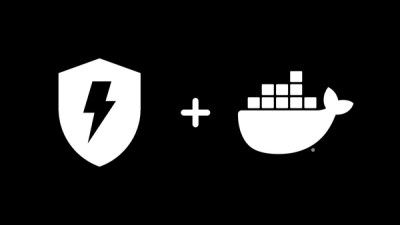websockify: WebSockets support for any application/server
websockify was formerly named wsproxy and was part of the
noVNC project.
At the most basic level, websockify just translates WebSockets traffic
to normal socket traffic. Websockify accepts the WebSockets handshake,
parses it, and then begins forwarding traffic between the client and
the target in both directions.
News/help/contact
Notable commits, announcements and news are posted to
@noVNC
If you are a websockify developer/integrator/user (or want to be)
please join the noVNC/websockify
discussion group
Bugs and feature requests can be submitted via github
issues.
If you want to show appreciation for websockify you could donate to a great
non-profits such as: Compassion
International, SIL,
Habitat for Humanity, Electronic Frontier
Foundation, Against Malaria
Foundation, Nothing But
Nets, etc. Please tweet @noVNC if you do.
WebSockets binary data
Starting with websockify 0.5.0, only the HyBi / IETF
6455 WebSocket protocol is supported. There is no support for the older
Base64 encoded data format.
Encrypted WebSocket connections (wss://)
To encrypt the traffic using the WebSocket 'wss://' URI scheme you need to
generate a certificate and key for Websockify to load. By default, Websockify
loads a certificate file name self.pem but the --cert=CERT and --key=KEY
options can override the file name. You can generate a self-signed certificate
using openssl. When asked for the common name, use the hostname of the server
where the proxy will be running:
openssl req -new -x509 -days 365 -nodes -out self.pem -keyout self.pem
For a self-signed certificate to work, you need to make your client/browser
understand it. You can do this by installing it as accepted certificate, or by
using that same certificate for a HTTPS connection to which you navigate first
and approve. Browsers generally don't give you the "trust certificate?" prompt
by opening a WSS socket with invalid certificate, hence you need to have it
accept it by either of those two methods.
The ports may be considered as distinguishing connections by the browser,
for example, if your website url is https://my.local:8443 and your WebSocket
url is wss://my.local:8001, first browse to https://my.local:8001, add the
exception, then browse to https://my.local:8443 and add another exception.
Then an html page served over :8443 will be able to open WSS to :8001
If you have a commercial/valid SSL certificate with one or more intermediate
certificates, concat them into one file, server certificate first, then the
intermediate(s) from the CA, etc. Point to this file with the --cert option
and then also to the key with --key. Finally, use --ssl-only as needed.
Additional websockify features
These are not necessary for the basic operation.
-
Daemonizing: When the -D option is specified, websockify runs
in the background as a daemon process.
-
SSL (the wss:// WebSockets URI): This is detected automatically by
websockify by sniffing the first byte sent from the client and then
wrapping the socket if the data starts with '\x16' or '\x80'
(indicating SSL).
-
Session recording: This feature that allows recording of the traffic
sent and received from the client to a file using the --record
option.
-
Mini-webserver: websockify can detect and respond to normal web
requests on the same port as the WebSockets proxy. This functionality
is activated with the --web DIR option where DIR is the root of the
web directory to serve.
-
Wrap a program: see the "Wrap a Program" section below.
-
Log files: websockify can save all logging information in a file.
This functionality is activated with the --log-file FILE option
where FILE is the file where the logs should be saved.
-
Authentication plugins: websockify can demand authentication for
websocket connections and, if you use --web-auth, also for normal
web requests. This functionality is activated with the
--auth-plugin CLASS and --auth-source ARG options, where CLASS is
usually one from auth_plugins.py and ARG is the plugin's configuration.
-
Token plugins: a single instance of websockify can connect clients to
multiple different pre-configured targets, depending on the token sent
by the client using the token URL parameter, or the hostname used to
reach websockify, if you use --host-token. This functionality is
activated with the --token-plugin CLASS and --token-source ARG
options, where CLASS is usually one from token_plugins.py and ARG is
the plugin's configuration.
Other implementations of websockify
The primary implementation of websockify is in python. There are
several alternate implementations in other languages available in
our sister repositories websockify-js
(JavaScript/Node.js) and websockify-other
(C, Clojure, Ruby).
In addition there are several other external projects that implement
the websockify "protocol". See the alternate implementation Feature
Matrix for
more information.
Wrap a Program
In addition to proxying from a source address to a target address
(which may be on a different system), websockify has the ability to
launch a program on the local system and proxy WebSockets traffic to
a normal TCP port owned/bound by the program.
This is accomplished by the LD_PRELOAD library (rebind.so)
which intercepts bind() system calls by the program. The specified
port is moved to a new localhost/loopback free high port. websockify
then proxies WebSockets traffic directed to the original port to the
new (moved) port of the program.
The program wrap mode is invoked by replacing the target with --
followed by the program command line to wrap.
`./run 2023 -- PROGRAM ARGS`
The --wrap-mode option can be used to indicate what action to take
when the wrapped program exits or daemonizes.
Here is an example of using websockify to wrap the vncserver command
(which backgrounds itself) for use with
noVNC:
`./run 5901 --wrap-mode=ignore -- vncserver -geometry 1024x768 :1`
Here is an example of wrapping telnetd (from krb5-telnetd). telnetd
exits after the connection closes so the wrap mode is set to respawn
the command:
`sudo ./run 2023 --wrap-mode=respawn -- telnetd -debug 2023`
The wstelnet.html page in the websockify-js
project demonstrates a simple WebSockets based telnet client (use
'localhost' and '2023' for the host and port respectively).
Installing websockify
Download one of the releases or the latest development version, extract
it and run python3 setup.py install as root in the directory where you
extracted the files. Normally, this will also install numpy for better
performance, if you don't have it installed already. However, numpy is
optional. If you don't want to install numpy or if you can't compile it,
you can edit setup.py and remove the install_requires=['numpy'], line
before running python3 setup.py install.
Afterwards, websockify should be available in your path. Run
websockify --help to confirm it's installed correctly.
Running with Docker/Podman
You can also run websockify using Docker, Podman, Singularity, udocker or
your favourite container runtime that support OCI container images.
The entrypoint of the image is the run command.
To build the image:
./docker/build.sh
Once built you can just launch it with the same
arguments you would give to the run command and taking care of
assigning the port mappings:
docker run -it --rm -p <port>:<container_port> novnc/websockify <container_port> <run_arguments>
For example to forward traffic from local port 7000 to 10.1.1.1:5902
you can use:
docker run -it --rm -p 7000:80 novnc/websockify 80 10.1.1.1:5902
If you need to include files, like for example for the --web or --cert
options you can just mount the required files in the /data volume and then
you can reference them in the usual way:
docker run -it --rm -p 443:443 -v websockify-data:/data novnc/websockify --cert /data/self.pem --web /data/noVNC :443 --token-plugin TokenRedis --token-source myredis.local:6379 --ssl-only --ssl-version tlsv1_2
Changes
0.13.0
- Support for Python < 3.6 has been dropped.
- SNI is enabled when connecting to an SSL target as an SSL client.
- The TokenRedis plugin handles namespaces.
- Headers are sanitized before being passed to authentication plugins.
0.12.0
- The simplejson module is no longer needed for redis token support
- redis tokens can now be either JSON or plain text
- websockify can now listen to a Unix socket for incoming connections
0.11.0
- Command line now supports disabling directory listings
- Basic Dockerfile included
0.10.0
- Python 3.4 or newer is now required
- Empty message frames are now supported
- Tokens can now specify a Unix domain socket file to connect to
- Time limits on JWT tokens are now respected
- Whitespace is better tolerated in token files
- Lots of minor fixes...
0.9.0
- Base64 support removed and binary mode is now required
- Low level WebSocket protocol handling now has its own class
- Authentication now optionally required for web server
- Server hostname can be used as the token
- JWT/JWS/JWE can be used for the token
- redis can be used for the token
- Can now log to syslog
- Improved latency by disabling Nagle for proxied connection
- Added client certificate authentication
- Support for password protected certificate key file
- TLS ciphers and options are now configurable
- Can be invoked via inetd
- Lots of minor fixes...
0.8.0
- Make websockify properly terminate children on SIGTERM (#226)
- Remove logging in signal handlers (this can cause Python to hang under certain conditions) (#219)
- Make it easier to log to a file (#205)
- Add support for IPv6 addresses in tokens in the TokenFile token plugins (#197)
- Improve auth plugin framework to enable better support for HTTP auth (#194, #201)
- Fix bug in JSONTokenAPI token plugin (#192)
- Fix a missing variable in the exception handler (#178)
0.7.0
- Python 3 support fixes (#140, #155, #159)
- Generic token-parsing plugins support (#162)
- Generic authentication plugins support (#172)
- Fixed frame corruption on big-endian systems (#161)
- Support heartbeats (via PING) and automatic responses to PONG (#169)
- Automatically reject unmasked client frames by default (strict mode) (#174)
- Automatically restart interrupted select calls (#175)
- Make 'run' respect environment settings (including virtualenv) (#176)
0.6.1 - May 11, 2015
- PATCH RELEASE: Fixes a bug causing file_only to not be passed properly
0.6.0 - Feb 18, 2014
- NOTE : 0.6.0 will break existing code that sub-classes WebsocketProxy
- Refactor to use standard SocketServer RequestHandler design
- Fix zombie process bug on certain systems when using multiprocessing
- Add better unit tests
- Log information via python
logging module
0.5.1 - Jun 27, 2013
- use upstream einaros/ws (>=0.4.27) with websockify.js
- file_only and no_parent security options for WSRequestHandler
- Update build of web-socket-js (c0855c6cae)
- add include/web-socket-js-project submodule to gimite/web-socket-js
for DSFG compliance.
- drop Hixie protocol support
0.4.1 - Mar 12, 2013
- NOTE : 0.5.0 will drop Hixie protocol support
- add include/ directory and remove some dev files from source
distribution.
0.4.0 - Mar 12, 2013
- NOTE : 0.5.0 will drop Hixie protocol support
- use Buffer base64 support in Node.js implementation
0.3.0 - Jan 15, 2013
- refactor into modules: websocket, websocketproxy
- switch to web-socket-js that uses IETF 6455
- change to MPL 2.0 license for include/*.js
- fix session recording
0.2.1 - Oct 15, 2012
- re-released with updated version number
0.2.0 - Sep 17, 2012
- Binary data support in websock.js
- Target config file/dir and multiple targets with token selector
- IPv6 fixes
- SSL target support
- Proxy to/from unix socket
0.1.0 - May 11, 2012
- Initial versioned release.



